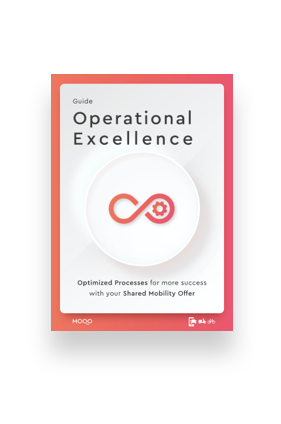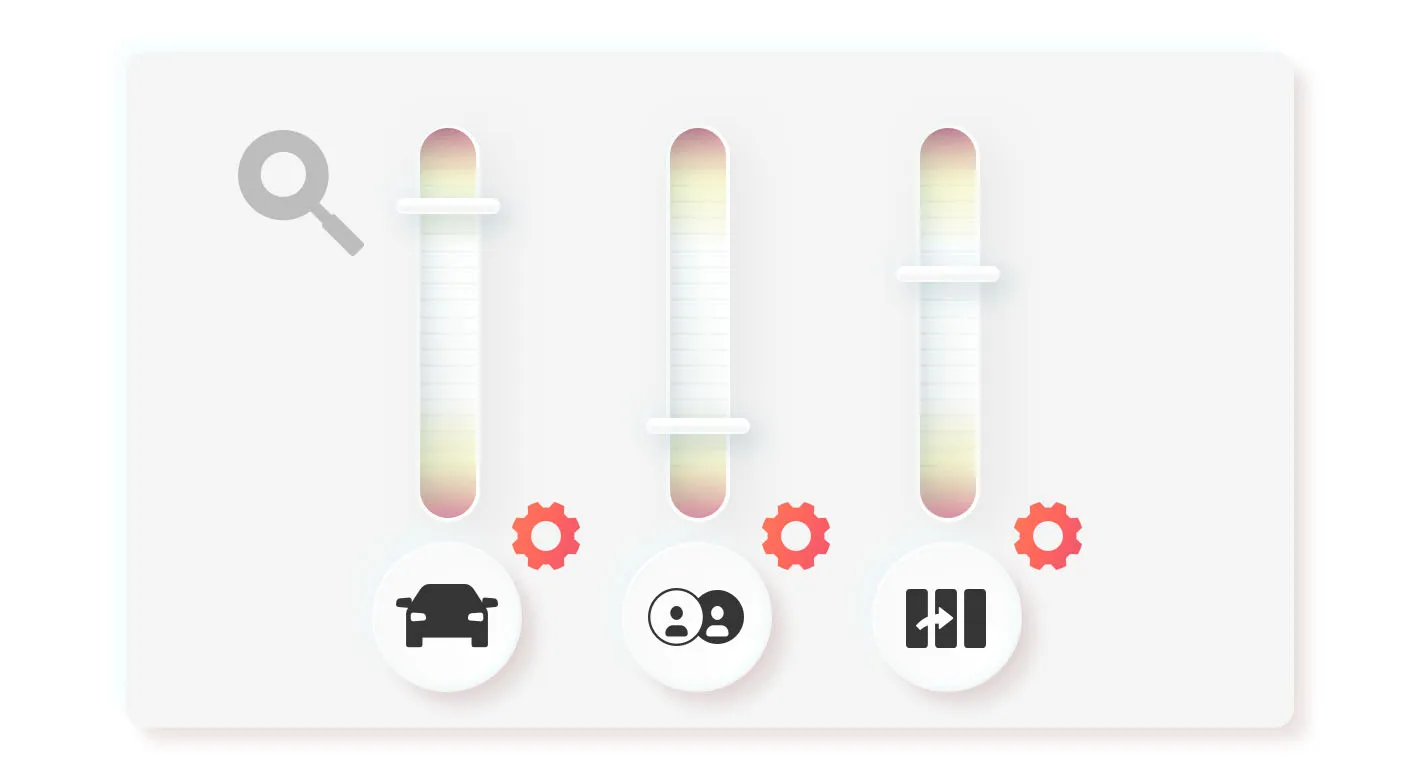
3 min read • December 7, 2021
It's easy to say that you want to optimize your own processes - but it's more difficult to get started. No matter how much you have studied the theory of Operational Excellence, Lean management and alike, you must eventually put what you have learned into practice. So that you don't stare into a blank sheet of paper forever and instead create a concrete roadmap that can be implemented, we present 5 possible first steps on your OPEX journey below.
Education
Optimizing processes in shared mobility can be done in five steps: set aside regular time for workflow review, identify bottlenecks and define goals, track key metrics to target problem areas, collaborate with the team to design focused improvements, and celebrate small wins to build momentum. This structured approach fosters a culture of Operational Excellence and drives continuous progress.

This guide offers an easy introduction, extensive knowledge, best practices, tips & tricks.
In 43 pages, you'll learn how to perform better with your team and add value to your offerings.

In day-to-day business, tasks with a long-term perspective, such as process optimization, are easily put on the back burner. After all, fast results are not expected here, meaning the fruits of labor ripen at a later point in time.
But that's no reason to keep putting off analyzing and refining workflows. The sooner you start, the sooner you'll work more efficiently and effortlessly - and benefit from higher customer satisfaction.
A simple but significant first step is to reserve a weekly appointment. During this time, you dedicate yourself exclusively to the work processes and procedures that need to be optimized. Be disciplined!

A useful step is to first get an overview of potential bottlenecks. The three most important bottleneck areas of a sharing operation are the following:

Insights into so-called "bottlenecks" and untapped potential help you define the goals of your process optimization.
Do you want to optimize processes such as vehicle repositioning, maintenance and cleaning in order to increase utilization? Do you want to target additional user groups or make your offering more attractive to existing user groups? Can improved workflows relieve your employees and better distribute effort?
Through Operational Excellence, your declared goals guide you to what you want to achieve.
Introduction into Operational Excellence ⟶

Now analyze your status quo: How long are vehicles in maintenance mode? How much time is required to improve the parking position of a free-floating vehicle? On average, how long do customers wait for a response to an inquiry? Does your team work a lot of overtime hours?
Collect relevant key figures (such as average maintenance time, time spent on repositioning, etc.) and find a suitable frequency (e.g. daily/weekly/monthly) in which you can monitor the key figures and see how they develop over time. Also define an optimum for each key figure, from which it should not deviate too frequently.
If key values remain below the defined optimum for a longer period of time and you cannot find any other reasons (e.g. prolonged illness of a team member) for the negative performance, the cause may lie in the process itself. By looking at the key performance indicators, you can determine which processes should be given priority as part of your operational excellence strategy.
Best Practice: OPEX at Bilkollektivet ⟶

Even if you are ultimately responsible for optimizing your processes, you cannot identify all problems on your own and certainly cannot solve them all on your own.
For each process under consideration, seek out responsible employees and schedule regular meetings to discuss possible and necessary measures to be taken and evaluate the processes step by step.
Fixed meeting dates ensure a certain commitment on the part of all those involved and prevent the topic from slipping off the table in day-to-day work.
Methods for Process Optimization in Practice ⟶

Tip
Start with one (sub-)process first and not with several processes at the same time - especially if you are still at the beginning of process optimization. In this way, you can focus entirely on this process and apply potential learnings directly to the next process.

Operational Excellence is like a rowing boat in which everyone has to row at the same pace to reach the target. You need a mindset throughout the team that is geared toward problem solving and process optimization.
Anchoring this mindset in all employees and ensuring acceptance of any associated restructuring and change is not easy in every organization.
Successes that have already been achieved are a convincing argument. As soon as you have successfully optimized a process and can see the effects in the form of improved key figures or positive customer feedback, tell your colleagues about it!
Act as an OPEX representative, be proud of the improvements you have achieved, and don't stop telling the rest of the team about them. This way you demonstrate how worthwhile it is to carefully revise individual work processes and in turn increases the general motivation to follow OPEX.
OPEX for shared mobility operators ⟶

Operational Excellence is not a given conclusion where much is certain. Nor is it more a marathon than a sprint. Nevertheless, excellence is not as unattainable and abstract as you may have feared. Take small steps, rely on current company data, seek exchange with your team, and keep your users at the center of focus. Then they will soon be (even) more satisfied than they are today.

Download our free comprehensive guide about OPEX and learn how to bring your internal processes and operations to the next level.